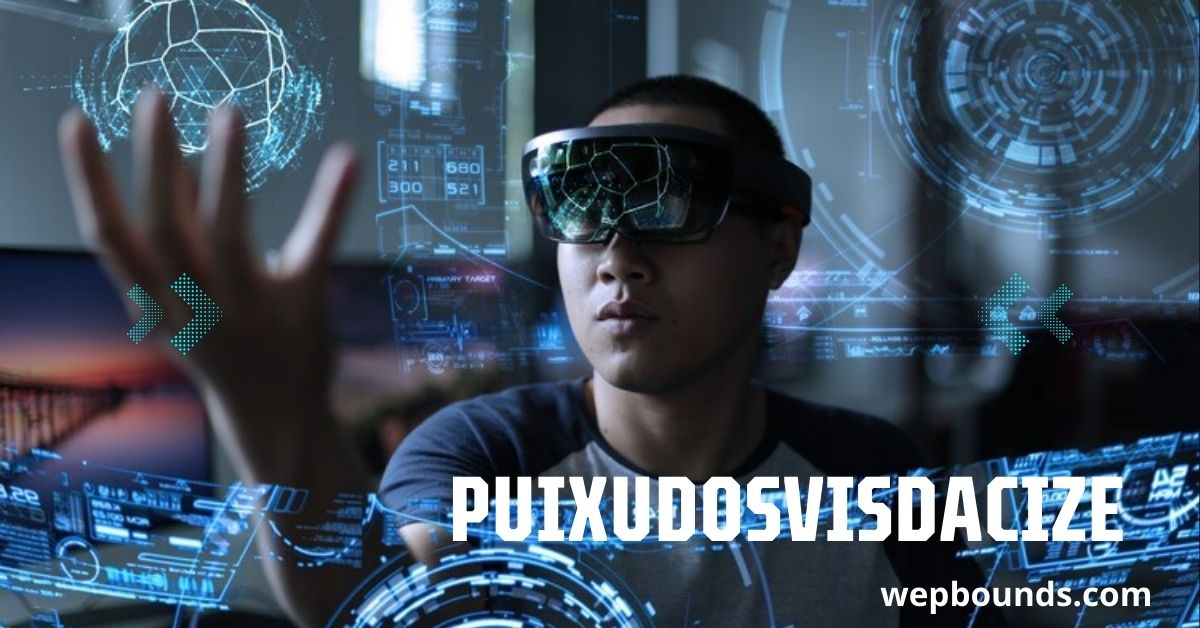Technology has continuously reshaped human existence, with Artificial Intelligence (AI) and Virtual Reality (VR) at the forefront of this transformation. As these technologies converge, they unlock new realms of possibility that redefine human perception, intelligence, and interaction. The term “puixudosvisdacize” encapsulates this complex integration—where AI and VR unite to enhance human cognitive and perceptual abilities, offering unprecedented experiences that bridge the gap between reality and digital realms.
This article delves into the concept of puixudosvisdacize, exploring its implications, applications, challenges, and potential future developments.
Understanding Artificial Intelligence (AI)
What is AI?
Artificial Intelligence (AI) refers to the development of computer systems capable of performing tasks that typically require human intelligence. These tasks include:
- Learning: AI systems analyze data, recognize patterns, and improve performance over time.
- Reasoning: Machines make logical decisions based on available information.
- Perception: AI can interpret visual, audio, and textual data to understand its surroundings.
- Problem-Solving: AI can find solutions to complex problems across various industries.
The Role of AI in Modern Society
AI is already embedded in daily life through voice assistants (like Siri and Alexa), recommendation algorithms (on Netflix and Amazon), and automation in industries such as healthcare, finance, and education. AI’s adaptability makes it a crucial component in enhancing virtual experiences.

Understanding Virtual Reality (VR)
What is VR?
Virtual Reality (VR) is a technology that immerses users in a digitally simulated environment. This is achieved through:
- VR Headsets: Devices like Oculus Rift, HTC Vive, and PlayStation VR create immersive 3D worlds.
- Motion Tracking: Sensors track user movements to provide real-time interactions within the VR space.
- Haptic Feedback: Gloves, suits, and controllers simulate the sense of touch.
How VR Enhances Human Interaction
VR is used in:
Also Read: Gaykontaktekleve: A Comprehensive Guide
- Gaming and Entertainment: Providing fully immersive experiences for players.
- Training and Simulation: Military, aviation, and medical professionals use VR to practice real-world scenarios.
- Therapeutic Applications: Helping treat PTSD, anxiety, and phobias through controlled exposure therapy.
The Concept of Puixudosvisdacize: AI and VR Integration
The term puixudosvisdacize describes the transformative fusion of AI and VR, creating hyper-intelligent virtual environments that adapt, learn, and respond dynamically to user interactions. This integration has profound implications in several fields, revolutionizing how humans engage with digital experiences.
How AI Enhances VR
AI brings intelligence to VR by enabling:
- Personalized Experiences: AI analyzes user behavior to customize virtual environments.
- Smart NPCs (Non-Playable Characters): Virtual entities that interact with users in a realistic and unpredictable manner.
- Real-time Adaptation: AI-powered VR can modify settings based on user emotions, preferences, or reactions.
The Role of Machine Learning in VR
Machine Learning (ML), a subset of AI, plays a significant role in:
- Speech and Gesture Recognition: AI interprets voice commands and body movements, making VR more interactive.
- Emotion Detection: AI-driven VR environments can adapt based on facial expressions and physiological signals.
- Autonomous World Building: AI can generate entire virtual worlds in real-time based on user input.
Also Read: Bonosmeile: A Comprehensive Guide
Applications of Puixudosvisdacize
1. Therapeutic and Medical Uses
- Mental Health Treatment: AI-driven VR therapy can help patients manage stress, anxiety, and PTSD.
- Pain Management: Virtual environments distract patients from pain during medical procedures.
- Cognitive Rehabilitation: AI-based VR is used for stroke rehabilitation and neuroplasticity exercises.
2. Education and Skill Development
- Immersive Learning: AI-powered VR provides personalized education in STEM, history, and the arts.
- Medical Training: Surgeons can practice complex procedures in realistic VR simulations.
- Corporate Training: Employees undergo risk-free training in simulated work environments.
3. Entertainment and Gaming
- Hyper-Realistic Gaming: AI-powered NPCs provide realistic in-game interactions.
- Interactive Storytelling: AI tailors game narratives based on player decisions.
- Social VR: AI-driven avatars enable people to communicate in virtual spaces.
4. Workplace and Productivity
- Remote Collaboration: AI-powered VR meeting spaces enhance global teamwork.
- Data Visualization: VR provides interactive ways to analyze and interpret large datasets.
- AI-powered Assistance: Virtual AI assistants help in project management and task automation.
5. Exploration and Creativity
- AI-Generated Art and Music: AI composes music and creates digital art in virtual environments.
- Architectural and Engineering Simulations: AI-driven VR allows architects to walk through designs before construction.
- Space Exploration Simulations: Astronauts train in AI-powered virtual environments.
Challenges and Ethical Considerations
1. Data Privacy and Security
AI and VR require massive amounts of user data. Issues arise concerning:
- Personal Information Leaks: Unauthorized access to VR user data.
- AI Bias and Discrimination: Algorithms may reflect human biases in virtual environments.
2. Addiction and Psychological Effects
- Escapism and Overuse: Prolonged VR exposure can lead to addiction.
- Reality Confusion: Users may struggle to distinguish between virtual and physical experiences.
Also Read: AnonStoriesIG: Your Ultimate Guide to Viewing Instagram Stories Anonymously
3. Ethical Use of AI in VR
- Autonomy and Control: Users must maintain control over AI-driven virtual environments.
- Regulation and Governance: Governments and tech companies must establish ethical AI policies.
The Future of Puixudosvisdacize
1. Neural Integration and Brain-Computer Interfaces (BCIs)
Future AI-driven VR may directly interface with the brain, allowing:
- Thought-Controlled Interactions: Users navigate VR through neural commands.
- Memory Augmentation: AI-driven VR may assist in cognitive recall and learning.
2. Hyper-Realistic Digital Avatars
- AI-generated personas: Users will have ultra-realistic digital versions of themselves.
- Emotional AI: Avatars will mimic human emotions and responses.
3. Mass Adoption and Accessibility
- Affordable AI-VR Devices: Increased production will lower costs, making the technology accessible to more people.
- AI-Powered Translation: AI will enable real-time language translation within VR environments.
Also Read: Haxillzojid54: Revolutionizing Novcizpimkunot Systems for Modern Technology
Conclusion
The puixudosvisdacize revolution is reshaping how humans interact with technology. By merging AI with VR, we can create intelligent, immersive experiences that enhance learning, therapy, entertainment, and productivity. However, as we advance, ethical considerations must guide the responsible use of these technologies. The future of puixudosvisdacize holds immense potential, promising a new digital age where AI-driven virtual environments become indistinguishable from reality.
FAQs
What is Puixudosvisdacize?
It is the integration of AI and VR to enhance human interaction with digital environments, making them more immersive and responsive.
How does AI improve VR?
AI personalizes experiences, creates intelligent NPCs, enables speech and gesture recognition, and builds adaptive virtual worlds.
What industries benefit from Puixudosvisdacize?
Healthcare, education, gaming, corporate training, architecture, and entertainment all benefit from AI-driven VR applications.
Are there risks with AI-VR integration?
Yes, potential risks include data privacy concerns, psychological effects, ethical issues, and the possibility of over-reliance on virtual experiences.
What is the future of Puixudosvisdacize?
Future developments may include brain-computer interfaces, hyper-realistic avatars, AI-powered translation, and increased accessibility of AI-driven VR technology.








Leave a Reply